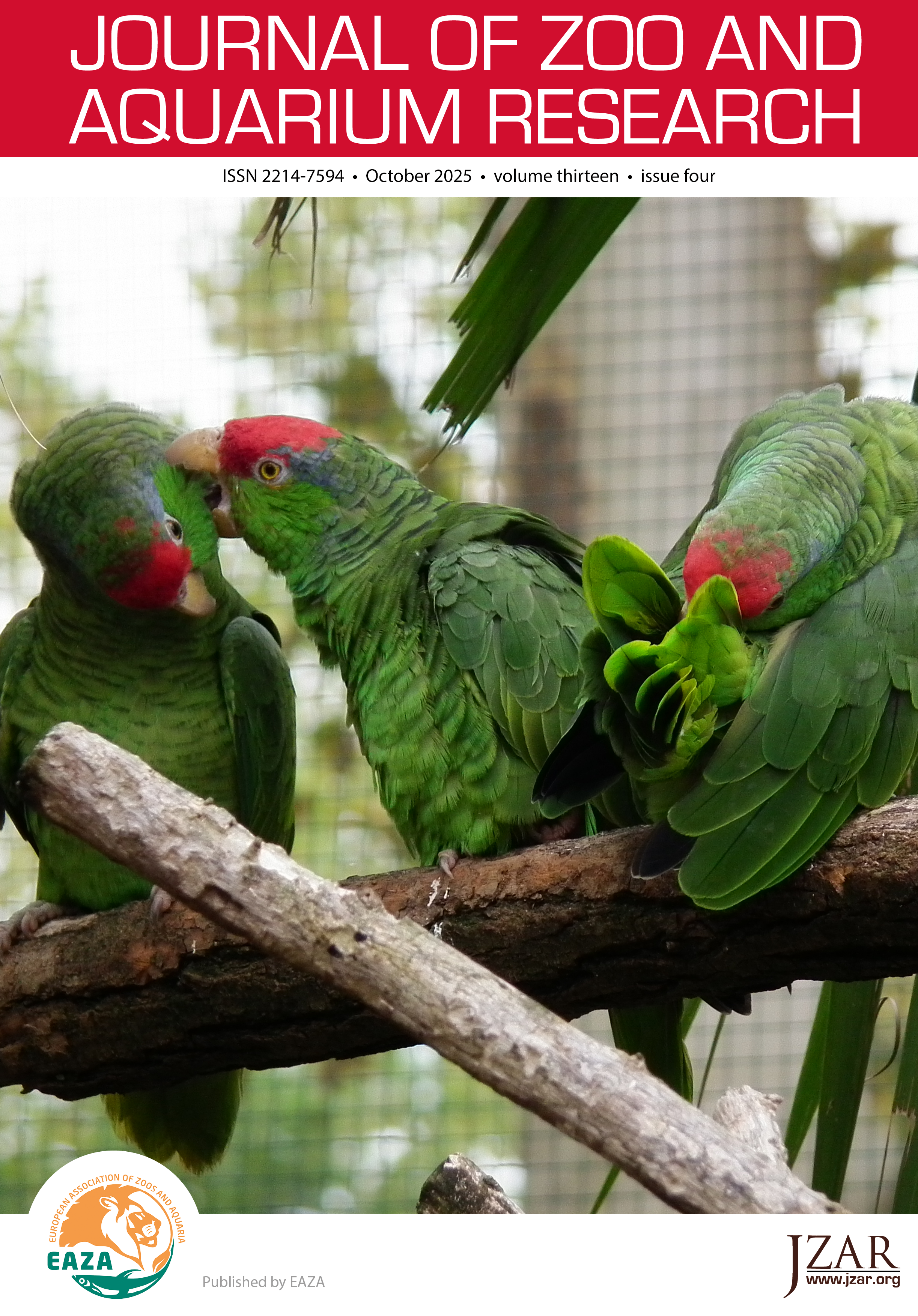Doing an amazon job with parrots: factors influencing breeding success in three EEP-managed parrot species
DOI:
https://doi.org/10.19227/jzar.v13i4.890Keywords:
Amazona brasiliensis, Amazona lilacina, Amazona viridgenalis, Psittacidae, studbook, zooAbstract
Studbooks are an important tool used in zoos and aquaria globally as a means of managing important animal populations. While the primary goal of a studbook is to manage genetic diversity, these programmes also have great value in collating information on breeding and husbandry practices across multiple international facilities. The aim of this study was to investigate possible triggers for breeding, enclosure design, husbandry styles, and challenges in the keeping of three amazon species in European Association of Zoos and Aquaria (EAZA)-approved holders. A breeding and husbandry survey was distributed, courtesy of the EAZA Ex situ Programmes (EEP), to holders of the Ecuadorian Amazona lilacina, red-tailed Amazona brasiliensis and red-crowned amazon Amazona viridigenalis in 2024. A total of 23 holders responded to the survey, reporting on the husbandry of 54 amazons. Ten holders (43.48%) had successfully bred these species in the past. The challenges outlined by respondents included individuals too young or too old for breeding, aggression from birds directed at keepers, and hesitancy to breed animals due to challenges with sourcing zoos to take the offspring. The majority of holders (22/23, 95.65%) provide regular enrichment, with nutritional enrichment being the most common form, while cognitive (15/23, 65.22%) and social enrichment (4/23, 17.39%) was used less frequently. These parrots are sometimes kept alongside other species such as small birds and primates. It is hoped that the results of this survey may improve the understanding of the husbandry criteria for amazons, and may aid in developing breeding protocols in the future.
Downloads
Published
How to Cite
Issue
Section
License
JZAR fulfils the DOAJ definition of open access and provides free and open access to the full text of all content without delay under a Creative Commons licence. The copyright holder of JZAR publications grants usage rights to third parties, allowing for immediate free access to the work and permitting any user to read, download, copy, distribute, print, search, or link to the full texts of articles.







